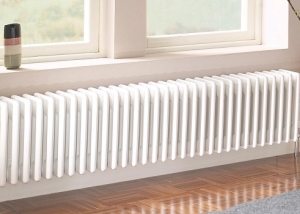Old and rusty pipes in the apartment can cause serious water problems for the entire house. A reasonable solution will be to get rid of all failed structures in time, especially since the replacement of water pipes does not require lengthy repair work.
Content
Types of water pipes: advantages and disadvantages
Modern manufacturers represent a huge range water pipes. When choosing them, you should focus not only on the price range, but also on functional features.
Copper pipes. The highest quality, durable and aesthetic pipes. Copper is an environmentally friendly material, so water pipes made of this metal are an excellent choice in terms of hygiene and safety. Main disadvantage copper pipes is their high cost, as well as the complexity of installation.
Plastic pipes. The best option for an inexpensive, quick and easy water supply replacement. Flexible and lightweight plastic pipes well suited for any kind of room. The surface of the plastic remains clean for a long time, deposits and corrosion do not form on it. Plastic pipes also do not impair water quality.
Helpful advice! It is worth considering that different types of plastic are used for hot and cold water supply. PVC pipes are often used for cold water, as they do not withstand temperatures above + 80 ° C. For hot water it is better to use pipes made of polypropylene.
Plastic pipes. This type of water supply has a multilayer structure. The inner layer is made of thin aluminum or copper, the outer one is made of polyethylene. Thanks to the protective top layer, metal-plastic pipes are not subject to corrosion, which significantly increases their service life. They are extremely ductile and have an affordable cost. However, when installing this type of pipe, it is necessary to monitor the tightness of their connection. Otherwise, leaks may occur.
Methods for replacing water pipes in an apartment
There are three most common ways to install pipes in a water system: press fitting, hot and cold welding.
To install a press fitting on a pipe segment, a crimp press is necessary (pliers, they can be manual or hydraulic). The end of the pipe, deformed during cutting, is expanded by a calibration reamer and worn on the part. Particular attention should be paid to the density of the junction of the mixer and the pipe. For additional sealing flax or silicone sealant is used. Installation in this way is quite time-consuming, but it gives a quality one-piece connection that does not require further maintenance.
A good result can be achieved by using the method of hot welding (soldering). Work is done using electric soldering iron. To the required temperature (for pipes with a diameter of 20 mm 3-4 seconds are enough, for a diameter of 32 mm - 6-7 seconds) both the pipe and the fitting are heated. The section of the water supply connected by hot welding will serve for a long time if the position of the elements is not disturbed during cooling.The parts to be welded must be fixed, otherwise the joint will become unusable.
For installation by cold welding, a special moisture-resistant adhesive is required. The cold welding method is faster, but not as reliable as a press fitting or soldering. For welding pipes using glue, certain skills and speed of action are needed, since the adhesive solution quickly loses its plasticity. Pipe sections must be well prepared before applying glue. They are cleaned with sandpaper, and then degreased with a solvent.
Important! The slice should be cleaned thoroughly: residual grease or dust contaminants may reduce the quality of bonding and the joint will not be durable.
To avoid vibration of the pipe with a strong pressure of water, it is necessary to ensure tight fastening of the water supply structure to the wall. For this, it is worth purchasing special clamps (clips). The inner diameter of the fasteners must exactly match the outer diameter of the pipe. At the same time, the distance between the clips will be at least 40 cm for pipes with a diameter of 50 mm, and at least 80 cm for a diameter of 100 mm.
Tools required when replacing water pipes
In order to replace water pipes in your apartment yourself, it is not necessary to have professional appliances. For the correct connection of all elements the following tools and materials will be sufficient:
- puncher or hammer drill, grinder for dismantling old pipes;
- an electric soldering iron for welding plastic or special glue if PVC pipes are mounted by gluing;
- fittings, sealing cuffs, clamps for fixing pipes to the wall;
- pliers, calibration reamer, which ensure tight joining when connected using the press fitting method;
- auxiliary tools: hammer, level, sandpaper, screwdrivers of different sizes, adjustable wrench, mounting gun.
Replacing water pipes: basic recommendations
Before proceeding with the installation of the water supply system in the apartment, the location of all pipes should be clearly defined. It is best to draw a detailed diagram taking into account such nuances as bends, turns, joints of segments. This scheme will help to calculate the required amount of materials and components for the work.
Helpful advice! When installing pipes made of PVC or polypropylene, it is worth considering their high coefficient of expansion with increasing temperature. So that there is no strong voltage in the pipe during heating, compensation discharges (bends, U-shaped) are used in the circuit.
It is necessary to buy materials for replacing water pipes in the apartment with a small margin, it is worth considering the possibility of damage to parts. It is desirable that all components are of the same brand. If you think that your experience is not enough, practice a test connection before starting repair work.









